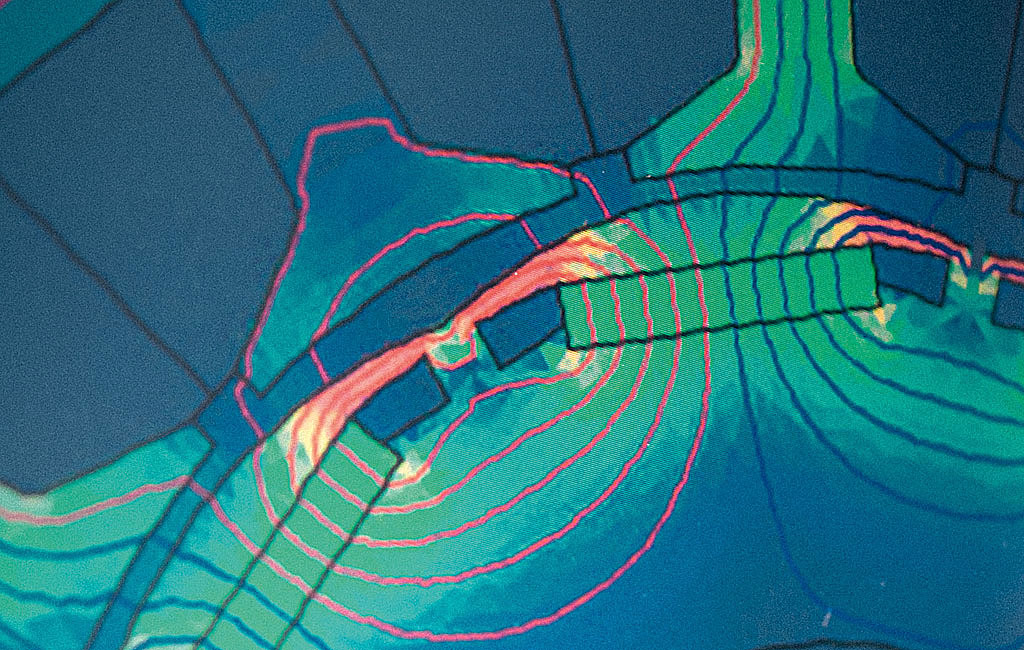High power density, low losses, and very dynamic behavior – these were the requirements that a customer in the automotive industry placed on the electronically commutated external rotor motor for their exhaust aftertreatment pump system. “Our standard motor was not designed for this,” says Frank Jeske, Head of Motor and System Development at ebm-papst in St. Georgen. “A few modifications to the motor were required for the application.”
In the past, for development projects like this, ebm-papst used to work simultaneously with different software tools which came closer and closer to the solution in repeated calculation runs. Using this, the engineers designed a preliminary version and built the first samples on this basis. They tested them, changed parameters, and developed new preliminary versions and samples until the motor met the desired requirements at some point. “The motor underwent various optimization loops,” explains Jeske. “That cost a lot of time and money.” So the motor working group at ebm-papst started looking for better development methods.
“The program’s knowledge grows. If we have a follow-up project, we can use the data and experience gained from this project and reuse parts.”
Frank Jeske, Head of Motor and System Development at ebm-papst

Illustration of the stator of the motor with optimizations. (Photo | Linz Center of Mechatronics)
The St. Georgen site found the solution for industrial and automotive applications in the SyMSpace system developed by the Linz Center of Mechatronics. The program can independently control third-party software such as CAD, finite element solvers, and dynamic simulation tools remotely, thus combining all the necessary tools in one program. “Now we create models and tell the program which parameters these should be optimized for – for example for minimum losses. It then does the calculations itself – for example over the weekend – and if everything works out, we can already create samples on Monday,” says Jeske.
As a result, the customer receives reliable intermediate results faster, making adaptations easier and ultimately creating a better product. This is because the calculated optimum is more accurate than getting closer to the requirements using sample loops, provided that the models reflect reality to a precise enough extent. “The major advantage is that the program’s knowledge grows. If we have a follow-up project, we can use the data and experience gained from this project and reuse parts. This means we reach our goal faster.”
Future projects: Digital twin and thermal modeling
Since the 90s, ebm-papst has been working closely with the Linz Center of Mechatronics and the Institut für elektrische Antriebe und Leistungselektronik (Institute for Electrical Drives and Power Electronics) at the Johannes Kepler University of Linz on the optimization of systems. Both are currently working with other companies on the topic of digital twins as part of a publicly supported project. In future, a simulation model is to be provided to the customer in advance. They will be able to use this to integrate the functionality of the motor or the complete drive system into their system as a digital version. In this way, they can pre-simulate the behavior of the drive solution, such as speed, torque, thermal characteristics, losses and so on, and design their surroundings applicably before they have the product in their own hands.

The SyMSpace Optimizer compares losses in the motor and the costs of implementation. The developer can then choose the ideal combination. (Photo | Linz Center of Mechatronics)
The optimization of simulation models in SyMSpace was already the first step here. A key sub-aspect of this is thermal modeling. In industrial drive technology, there are often unforeseeable cycles with fast start-up, rapid braking, sudden changes in torque, or speed fluctuations. This makes simulation difficult because it is complicated to simulate how the active components of the motor heat up. This is set to change in the future: Together with the Linz Center of Mechatronics, ebm-papst is generating a thermal model for anticipating the loads that may arise in practice following calibration, using a target hardware connection. This means the company will soon be able to satisfy customer requirements in industrial drive technology even more precisely.
 About the Linz Center of Mechatronics (LCM)
About the Linz Center of Mechatronics (LCM)
The Linz Center of Mechatronics GmbH (LCM) is a partner for the research and development of both new technical products, systems and processes, and for the optimization of existing ones. It supports customers from the idea to the finished prototype. Customers benefit from their many years of experience, the international network, and direct access to the latest scientific findings.

Leave a comment